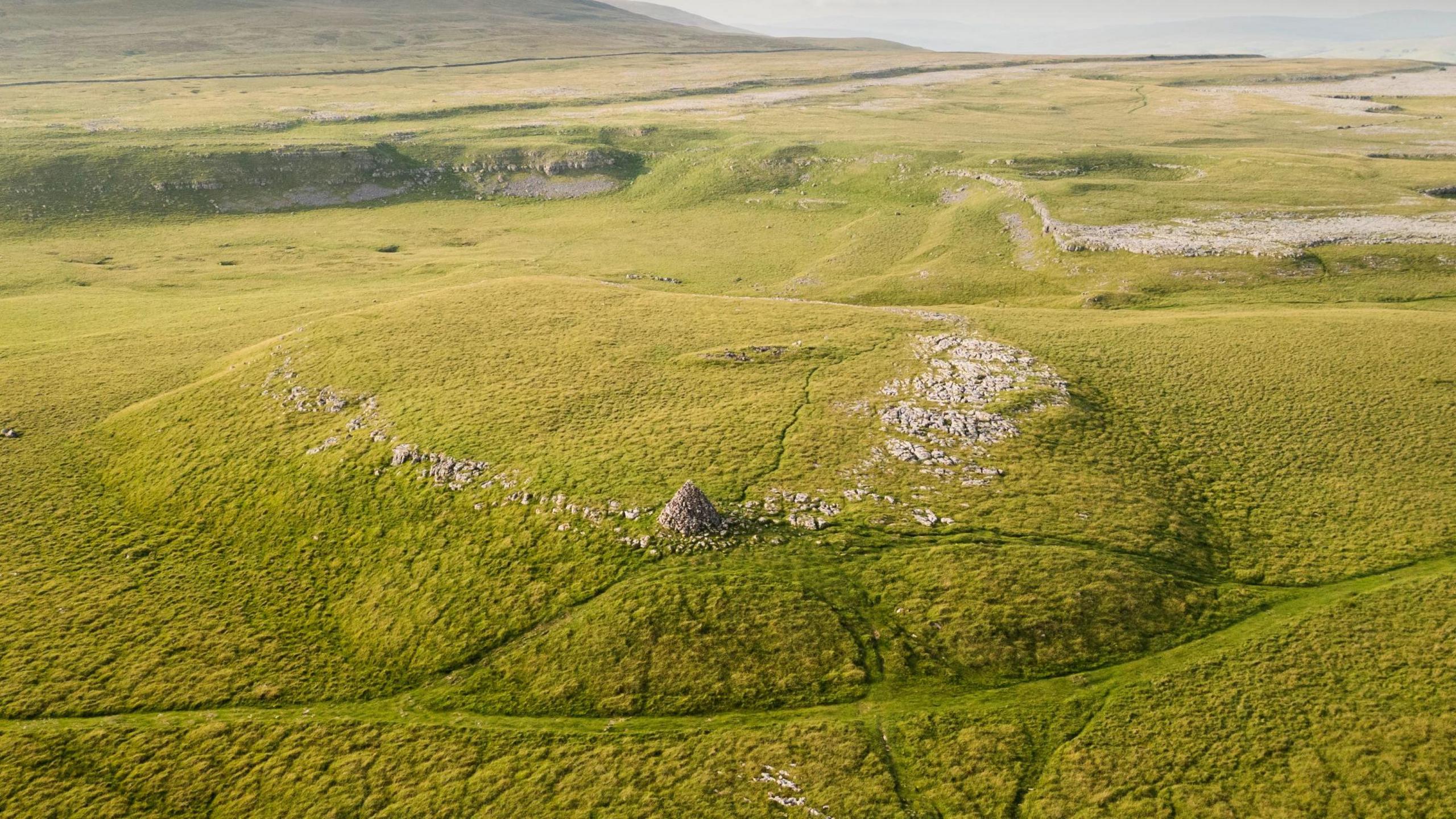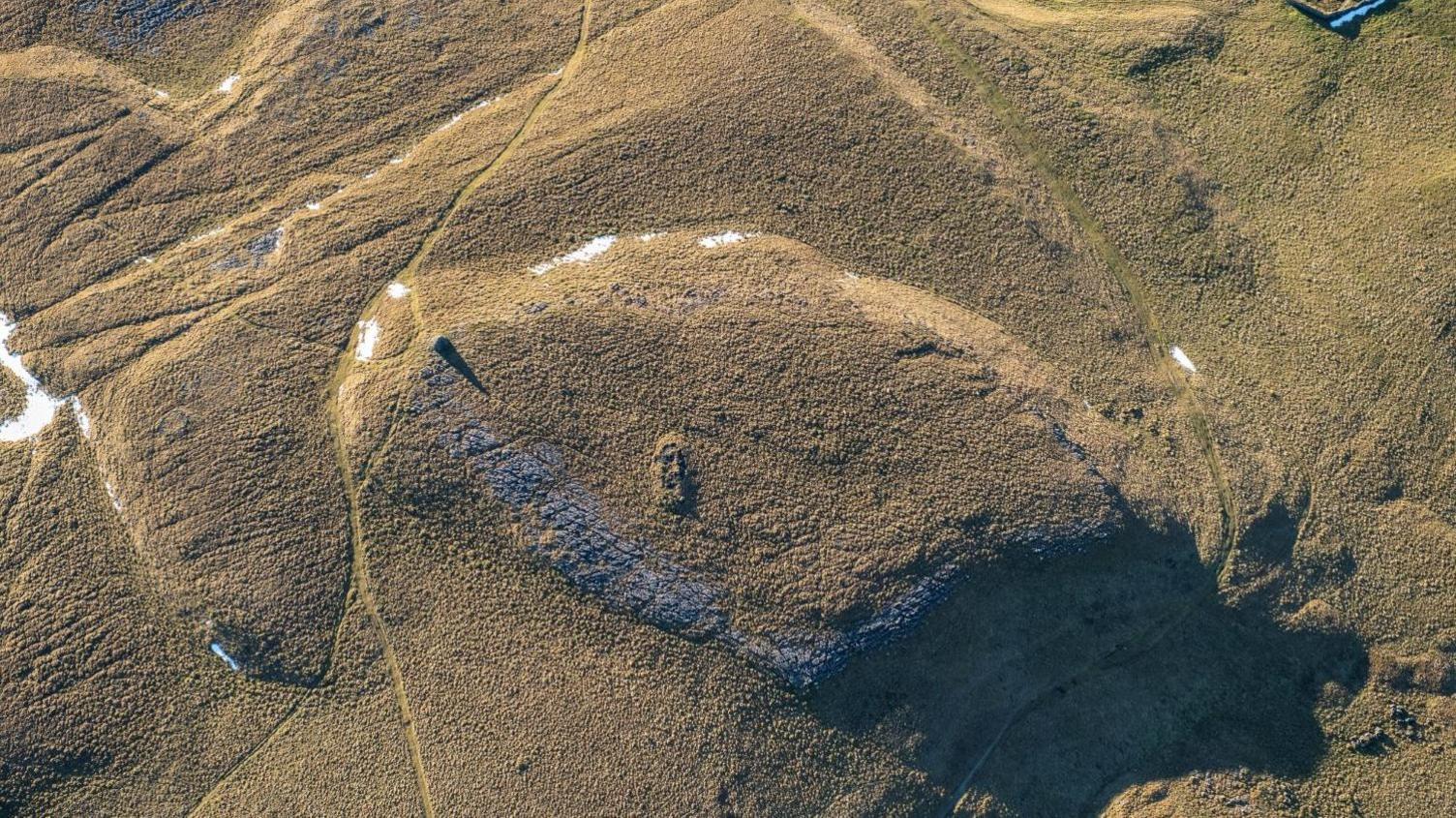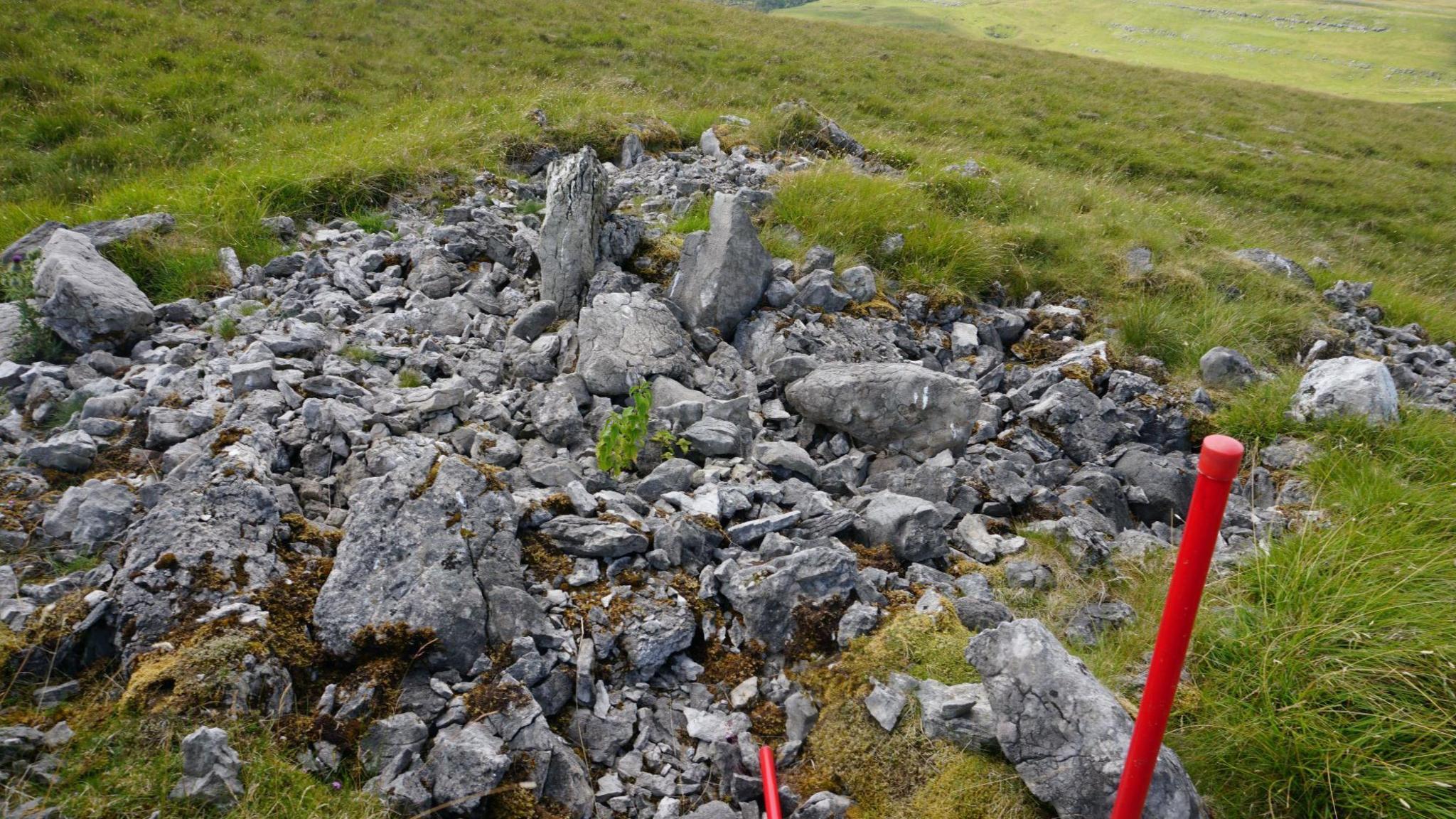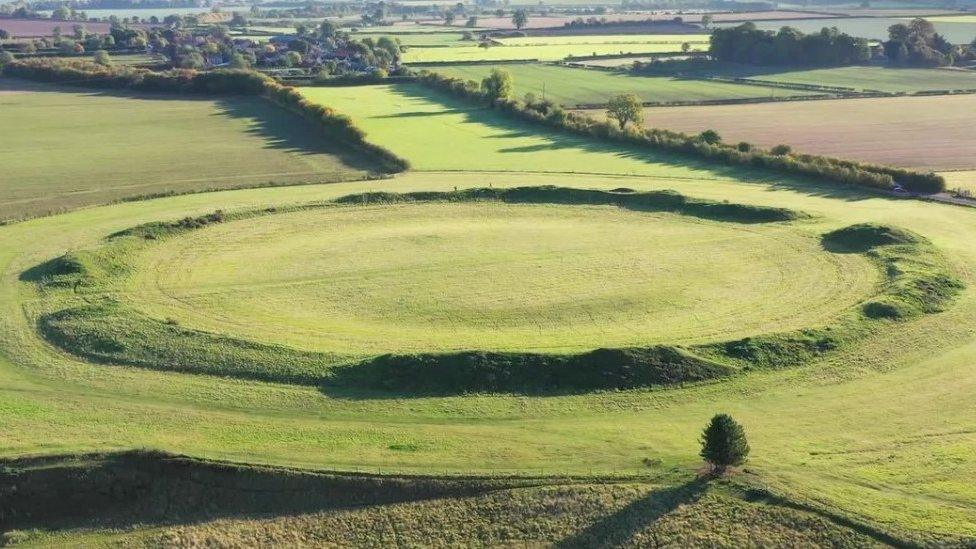Neolithic burial chambers granted protected status

The Dudderhouse Hill long cairn survives as a partly turf-covered oval mound of stones
- Published
A 5,000-year-old prehistoric monument in the Yorkshire Dales National Park has been granted protected status to help prevent any future damage.
The Dudderhouse Hill long cairn has been designated a Scheduled Monument, meaning it is legally protected against unauthorised change.
Dating back to the Neolithic age - approximately 3400 to 2400 BC - long cairns are considered to have been some of the first structures constructed by communities of humans.
Duncan Wilson, chief executive of Historic England, said scheduling the "remarkable Neolithic long cairn" would ensure this "rare and fragile piece of our prehistoric heritage receives the protection it deserves".
Currently, the Dudderhouse Hill long cairn survives as a partly turf-covered oval mound of stones, about 23m (75ft) long, 12m (39m) wide and 1m (3ft) high.
"It doesn't look particularly impressive and that's one of the problems," Paul Jeffery, Historic England's national listings manager, said.
"Nearby, about 70m (230ft) away, there's a cairn where people have added stones over time.
"Unfortunately, because they don't realise that this is such an important site, some people walking past pick up stones from what they think is just this pile and then add them to the other cairn and obviously that causes harm."

Walkers had removed stones from the Neolithic monument in the past
However, Mr Jeffrey added the monument was far from just a pile of stones.
"When you stand next to it, look out at the views and you realise that it's the remains of burial chambers that's lasted so long, then it's much more impressive," he added.
The listings manager explained the monument had been built at a time where hunter gatherers were settling down and becoming early farmers.
"This is really one of the first monuments built by a community in the country and some of the first in Europe," he said.
"This would have been a big monument that people would have recognised and said 'somebody lives there and somebody values this place'."

Protected status could attract grants to help conserve the site
As a Scheduled Monument, the Dudderhouse Hill long cairn will now receive the highest level of heritage protection available in England.
Mr Wilson said: "What makes this discovery particularly significant is that it belongs to a small group of recently identified long cairns in the Yorkshire Dales, an area where these monuments were once thought to be absent."
The Yorkshire Dales National Park Authority would now be able to put up signage explaining the site's importance.
The protected status could also attract grant funding to ensure the monument's maintenance for another 5,000 years.
Get in touch
Tell us which stories we should cover in Yorkshire
Listen to highlights from North Yorkshire on BBC Sounds, catch up with the latest episode of Look North.
Related topics
Related Internet links
- Published31 March 2024
